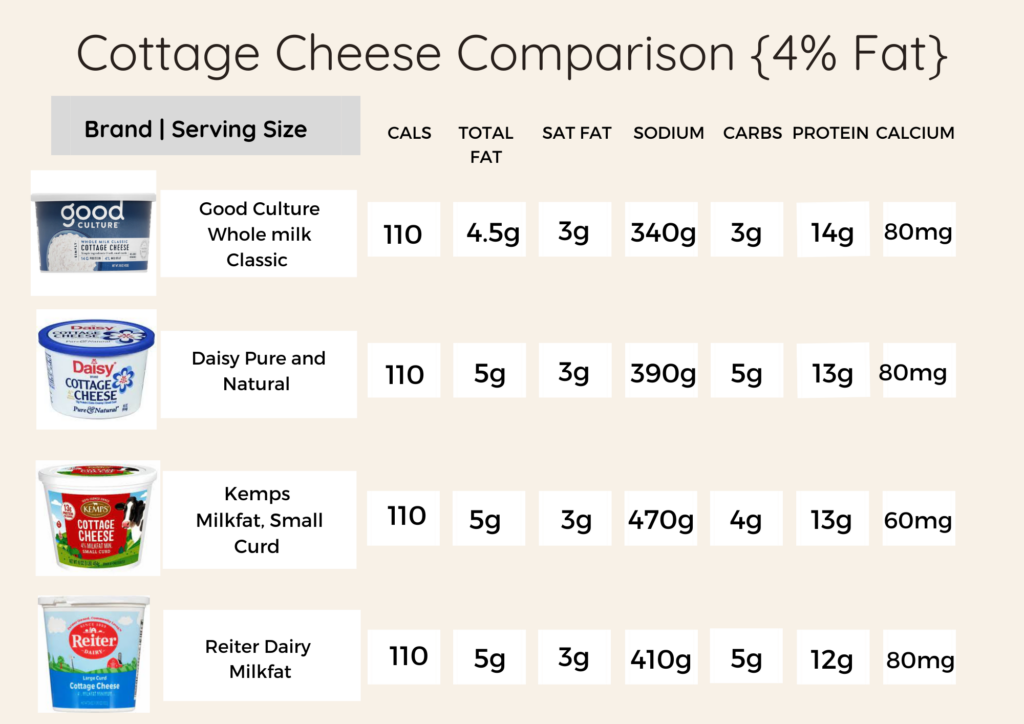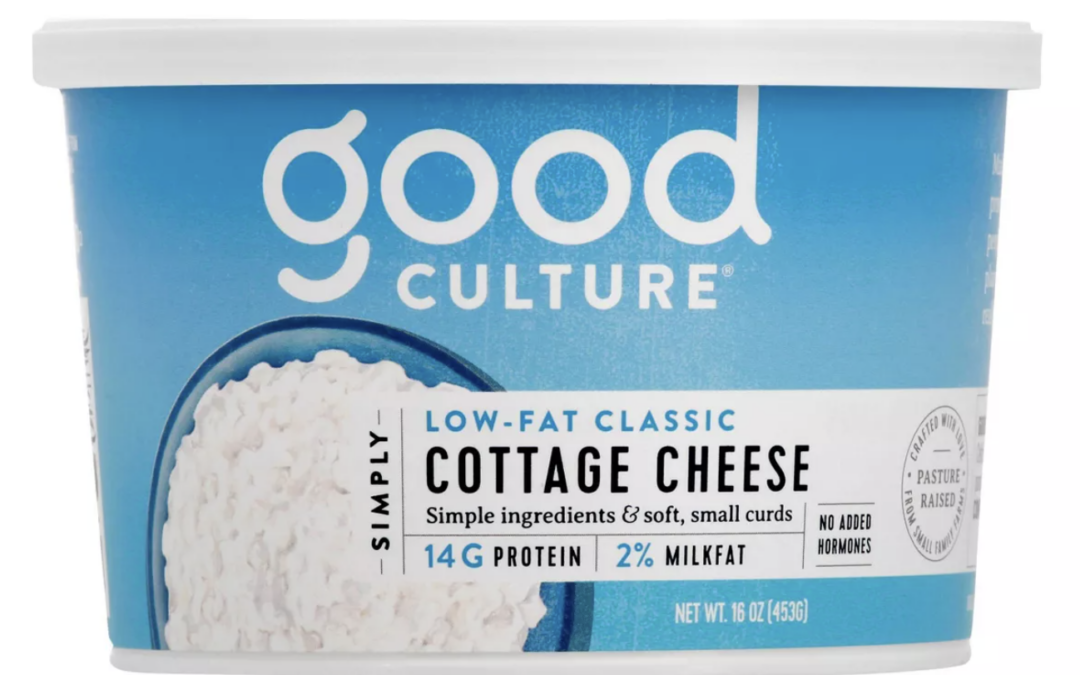Cottage cheese is a polarizing food. People either love it or hate it. As dietitians, we’re fans for its versatility and nutritional benefits. When compared to other types of cheese, this version is highly versatile with a big nutrient punch.
Cottage cheese is a dairy product made using curdled milk and whey. It has a distinctive mild flavor. European immigrants brought this art of cheese making to America in the 1800s.
It contains nutrients crucial for bone and teeth health and is a nutrient-dense source of protein. One cup contains 28 grams!
A quick internet search will give you TONS of ways to use this ingredient as a sub for everything from sour cream to feta. Plus, you’ll find recipes for pancakes, taco bowls, scrambled eggs, and bread that use this protein-packed all-star.
Why Did We Try Good Culture Cottage Cheese?
The increased interest in gut health and cottage cheese trending on TikTok spurred us to try Good Culture. Good Culture’s draw was its probiotics. In 2014, founder and owner of Good Culture, Jesse Merril, was diagnosed with ulcerative colitis, an inflammatory gut condition. This diagnosis was a catalyst to develop a line of products that supported his own health journey: live-cultured foods.
Good Culture contain probiotics. Probiotics are good bacteria that support digestion, regularity, immunity, and may even improve our mood.
We give Good Culture Cottage Cheese a 4/5 GRADE for having less sodium and slightly higher in protein than the other brands + probiotics!
Check out the nutrition comparisons for both the low and full-fat versions:


Beyond the traditional side dish, we’ve found so many ways to incorporate this bone-health supportive super foods.
- Add it to scrambled eggs for a high-protein egg salad.
- Blend into your pancake batter.
- Top a vegetable salad.
- Mix with granola and fruit for an afternoon snack
Might you be in the mood for a high-protein, fall dessert? Check out our Cottage Cheese Pumpkin Bars!

